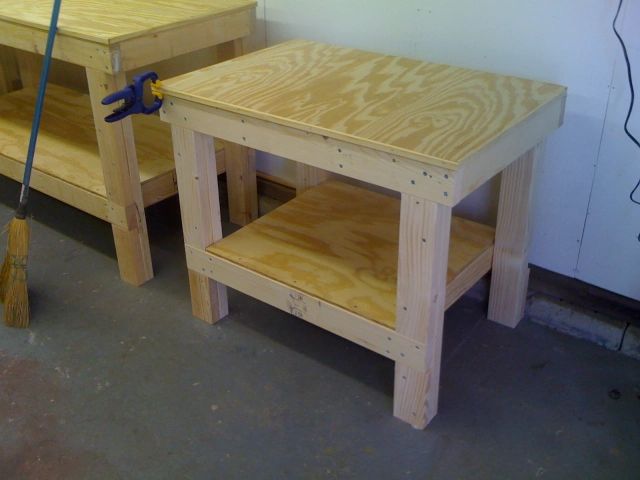How Much Weight Can Pottery Barn Crib Hold?
When it comes to crib safety, one of the most important factors to consider is the maximum recommended weight limit. Exceeding the weight capacity of a crib can put infants at risk of injury or even death. Pottery Barn, like all crib manufacturers, provides weight limits for their cribs that parents and caregivers should follow.
In general, most standard cribs on the market today are designed to safely hold infants up to about 50 pounds, though limits vary slightly by model. Going over the set weight recommendation can cause the crib to collapse or break, creating major hazards. Understanding Pottery Barn’s specific weight guidelines for their crib models is key for ensuring a baby’s sleeping environment remains sturdy and secure.
Typical Weight Limits for Cribs
Most standard cribs sold in the US have a weight limit between 35-50 pounds, according to crib manufacturers and the Consumer Product Safety Commission (source). This total weight capacity includes both the weight of the mattress and the child using the crib.
For example, popular crib brands like Graco, Delta Children, and Babyletto state their standard crib models can safely hold up to 50 pounds total (source). This means the crib, mattress, sheets, and child should not exceed 50 pounds together.
The Consumer Product Safety Commission, which regulates crib safety standards in the US, does not mandate a specific weight limit for cribs. However, most manufacturers voluntarily follow the 50 pound recommended limit for their standard cribs.
Weight Limits for Pottery Barn Cribs
Pottery Barn offers several crib models, each with their own specific weight limits according to the manufacturer specifications:
The Kendall crib has a weight limit of 50 lbs. According to the Kendall crib product page, “The maximum weight shall not be greater than 50 lb. (22.7 kg).”
The Emerson crib has a weight limit of 50 lbs as well. The Emerson crib manual states “The maximum weight shall not be greater than 50 lbs.”
For the Mackenzie crib, the weight limit is also 50 lbs, per the warning label on the Mackenzie crib itself.
Other Pottery Barn cribs like the Logan and the Dylan also adhere to the standard 50 lb weight limit.
Factors that Impact Weight Capacity
There are several key factors that determine how much weight a crib can safely hold before becoming compromised:
Crib construction – The quality of materials and joinery used in assembling the crib impacts its overall sturdiness. Cribs made with strong, durable wood and secure connections can typically support more weight than those made with lower quality materials and joins.
Crib materials – Wood, metal, and plastics have different weight capacities. Oftentimes wood is the strongest material for crib construction, especially hardwoods like oak, maple, and mahogany. Softer woods may have lower limits.
Crib age – Older cribs tend to have lower weight limits than newer ones, as materials can weaken over time with use. The older a crib gets, the more diligent you should be about not exceeding the recommended limits.
Proper assembly and maintenance are also key. Follow the manufacturer’s instructions closely when putting a crib together and inspect it routinely for any weaknesses or defects. Address any issues promptly to keep the crib’s structure intact. Adhering to weight limits will prolong its usable life.
Maximum Recommended Weight

Experts generally recommend not exceeding a weight limit of 50 pounds for most cribs. The ideal weight limit to ensure safety is 50 pounds or under, according to standards from organizations like the Consumer Product Safety Commission and the American Academy of Pediatrics (Source). While some high-end cribs may be rated for slightly higher weights, it’s best to transition your child to a toddler bed once they reach around 50 pounds. Exceeding the manufacturer’s recommended weight capacity greatly increases the risk of crib failure or collapse. It also accelerates normal wear-and-tear, damaging components like the mattress support and overall frame integrity. For optimal protection, aim to transition your child before they near the maximum rated weight.
Exceeding Weight Limits
Exceeding the recommended weight limit for a crib can be very dangerous. Most cribs are designed to safely hold a child up to 35-50 pounds. Exceeding this weight capacity significantly increases the risk of:
- The crib collapsing, according to Parent Hotline. This could lead to serious injury for the child.
- Railings detatching or breaking off, as noted by BabyPost. A falling railing could hit and harm the baby.
- Mattress support failure. The mattress support bars may bend or snap if overloaded.
- Overall structural failure. Excess weight can damage the integrity of the crib frame and joints.
Placing older, larger children or adults in a crib meant for babies under 50 pounds can permanently warp or break the crib. Parents should transition children to toddler beds or mattresses on the floor once they near the upper end of the crib’s weight capacity. Exceeding the limit risks significant injury or death.
Best Practices
Once your baby reaches the maximum recommended weight for their crib, it’s time to start planning their transition to avoid safety issues. Here are some tips for smoothly moving your child once they exceed the crib’s weight limit:
Consult your baby’s pediatrician to verify they are developmentally ready for a larger sleep space. Babies typically transition around 12-18 months.
Wait until your baby is able to stand up on their own before moving them. This helps prevent falling and injuries in a larger bed.
Start placing your baby down for naps in the new sleeping space first before moving them full time. This helps them get used to the change.
Use a transitional crib or convertible crib that can adjust as your baby grows so you don’t have to purchase multiple beds.
Lower the mattress to the lowest level and remove bumpers when moving your baby to a toddler bed to prevent falls.
Inspect the crib for any damage or instability if planning to use for a second child. Do not use a crib over 10 years old.
Continue safe sleep practices like keeping the crib free of loose bedding and blankets after moving your child. Babies can suffocate on soft bedding.
Warning Signs Crib Can’t Hold Weight
There are a few key warning signs that indicate a crib is being overloaded beyond its weight capacity and is unsafe for the child. According to the American Academy of Pediatrics (AAP) guidelines, parents should stop using a crib if they notice any of the following (https://snugglemeorganic.com/blog/crib-weight-limit/):
Creaking noises – If the crib makes loud creaking or cracking sounds when the child moves, it’s likely under too much stress. Wood can split and joints can loosen over time.
Bending – Check the top rails, legs, and mattress support for any bowing or bending. The crib should remain completely rigid. Sagging areas indicate the frame can’t handle the load.
Tilting – Make sure the crib doesn’t tilt to any side when weight is applied. It should sit flat and level on the floor at all times.
Loose components – Shake the crib lightly to check for loose bolts, joints, or mattress supports. These can detach with excess force.
If you notice any of these warning signs, it’s crucial to stop using the crib before a more catastrophic failure. The child’s safety always comes first. Consider transitioning to a sturdier toddler bed or contact the manufacturer for guidance.
Alternatives to Cribs
As children grow older and heavier, many parents look for alternatives to traditional cribs. Some good options include:
Toddler Beds
Toddler beds are a great transitional option once your child is too big for a crib. Toddler beds are low to the ground with guardrails on both sides for safety. Many cribs can convert into toddler beds by removing one side. Toddler beds allow more independence while still providing some security.
Montessori Floor Beds
Montessori floor beds are mattresses or futon mattresses placed directly on the floor. They allow easy access for a child to get in and out independently. Floor beds promote independence and can aid sleep transitions. Use a tight fitting sheet and make sure the room is safe for unsupervised play if using a floor bed.
Family Bed
Some families choose to transition their toddler to a family bed. While co-sleeping can provide comfort, be sure to follow safe sleep guidelines. Use a tight fitting sheet, keep pillows and blankets away from child’s face, and do not sleep with your toddler if under the influence of drugs or alcohol.
When transitioning out of a crib, focus on your child’s needs and developmental stage. Choose an option that allows independence while maintaining safety and comfort.
Key Takeaways
Pottery Barn cribs are designed to safely hold babies and young toddlers, with typical weight limits ranging from 30-50 pounds depending on the specific model. Exceeding the recommended weight puts strain on the crib and poses safety risks. Watch for warning signs like bowing slats or loosening joints. Consider switching to a toddler bed around age 2 or 35 pounds. When used properly following safety guidelines, Pottery Barn cribs provide a secure sleeping space. But weight limits should be followed to avoid accidents and injuries.





